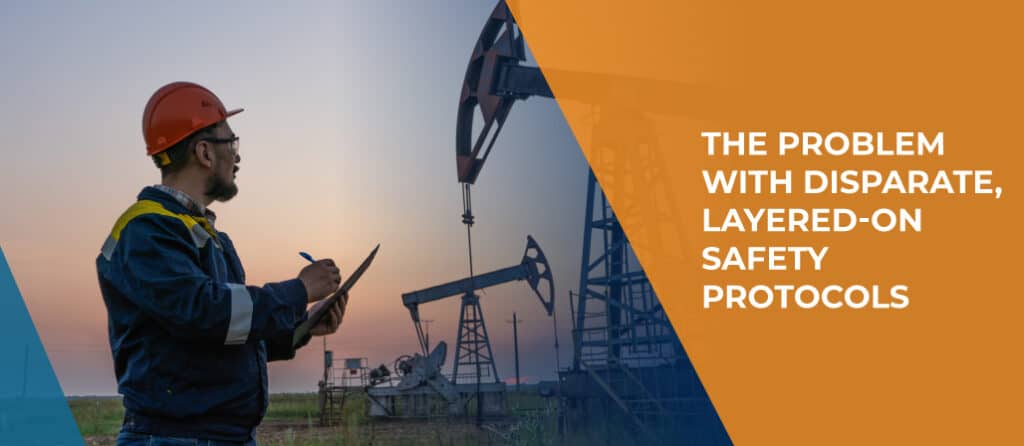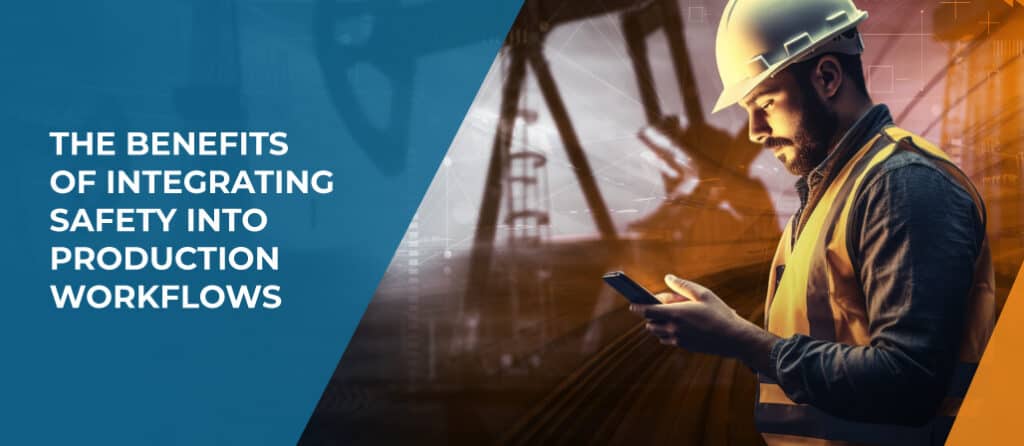Improving Oil & Gas Safety with Technology

The oil and gas industry comes with inherent physical risk. To mitigate its dangers, both the government and individual organizations mandate compliance with safety standards. What they don’t mandate, however, is how to go about complying with those standards – and that’s where the problems begin. To truly ensure the safety of its operations and employees, oil and gas companies must rely on technology.

In the past few decades, the oil and gas industry’s solution to safety and compliance was, in a word, paperwork. Seemingly every task required a signature on a form, all of which got collected at the end of the day and sent back to a pile on someone’s desk. More recently, some of those forms have gone digital, with “safety software” enabling people to fill out and submit their paperwork on a phone or computer (although plenty of companies still run things the old-fashioned way.)
This system is, of course, better than nothing. But it’s also intrinsically flawed. At the core, oil and gas organizations are in the business of drilling a hole, getting the oil out, and selling it as quickly as possible for as much money as possible. By layering safety procedures on top of every step along the way, they add an administrative burden to the field that impedes this process. It turns safety into a box to be checked, a task that people aren’t serious about, and a distraction. Paying lip service to safety with a form at every turn separates it from the business’s fundamental operations and ultimately still leads to a level of risk that no one should be willing to accept.
Do manual, layered-on safety procedures reduce the number of safety incidents? Yes. But they also slow down the efficiency of the business. Work becomes a two-step process and everything takes an hour longer. The safety workflow is completely disconnected from “real” work and delays ROI. Clearly, sending people home in the same shape as they showed up is the number one priority, but business shouldn’t have to suffer along the way.

A big part of safety is culture. Oil and gas companies need to walk the walk and talk the talk, showing executive engagement, prioritizing compliance, and being willing to pause a job and lose $2M in profits if that’s what it takes to ensure that a site is safe. That culture must come from the top, and software can’t solve it.
Software can, however, provide a mechanism to keep people safe while running the business efficiently and effectively. Not just any software, though. To truly improve on disjointed paper-and-pen forms (or their digital counterparts), technology must be fully incorporated into operations workflows, not sit separately on top of them.
A W Energy, that mindset is how we approach safety and compliance. Instead of having “safety software” to be safe and another workflow to do work, safety procedures are fully integrated with field processes in the same application. This enables safety protocols to happen more naturally and accurately. Because safety happens concurrently with the normal flow of field work instead of requiring workers to jump through extra hoops, data flows more seamlessly. When the person in the office looks at the data, they can be confident in its accuracy.
For example, rather than performing a task like closing a valve, then leaving and submitting a form somewhere, the W production offering enables the worker to take a picture of that valve directly within the field production app. He does it while he’s working on it, then it’s immediately available to everyone else working on that job. The team now has digital access to the safety documentation, so they can understand any risks and approach the job in a continuous and natural manner.
Geo-tracking happens within the app, too. Instead of seeing a person’s location on a map in a separate GPS system that’s disconnected from any other field operations, geo-positioning is fully integrated alongside that day’s tasks. This provides context as well as information. If you can only see that someone has been in a spot for two hours, maybe they’re just busy. But if you know that they were performing a ten minute task, you can tell that something is wrong.
Oil and gas organizations will never get to zero incidents by throwing a binder over a fence. Achieving real, consistent safety at production sites requires both a culture of safety and the tools to support that culture. With W’s production offering, operations teams gain the single pane of glass view they need to ensure that safety isn’t its own separate job – it’s a built-in part of the business and its DNA.

Author: Shrivan Kamdar, Director of Product Management at W Energy Software
Shrivan has worked in various industries including Oil & Gas, Chemical Fertilizers, and Biotech/Pharmaceuticals. From 2006 to 2014 he worked for ExxonMobil in a multitude of roles including Environmental Advisor, Process Engineer, Project Management and Risk Management. Since 2014, he has been working for Seven Lakes Technologies focusing on business efficiency solutions for the doers of the Oil & Gas industry.
About W Energy Software
W Energy Software, headquartered in Houston, TX, revolutionizes the oil and gas industry with its leading cloud-based energy platform. Made for upstream and midstream companies, our platform combines advanced software with deep industry knowledge, offering solutions spanning Field Service Management, Production, Accounting, Land, and Transportation. Countless energy professionals turn to W Energy to help their businesses adapt and grow. As the energy industry evolves, so does W Energy, continuously refining our platform to empower today’s needs and tomorrow’s advancements. Visit us at www.wenergysoftware.com to see how we’re shaping the future of energy operations.